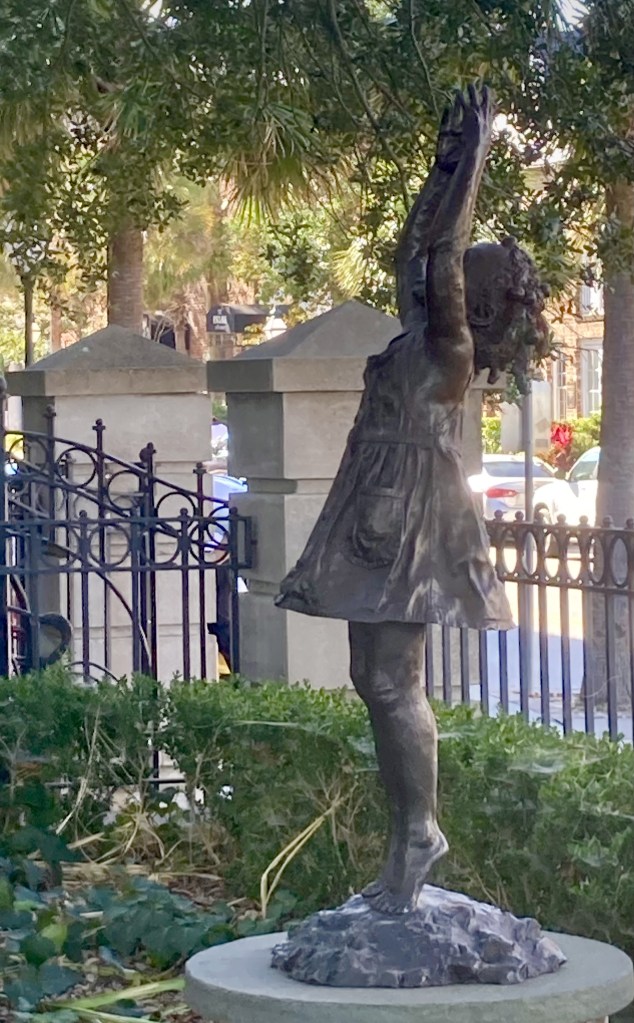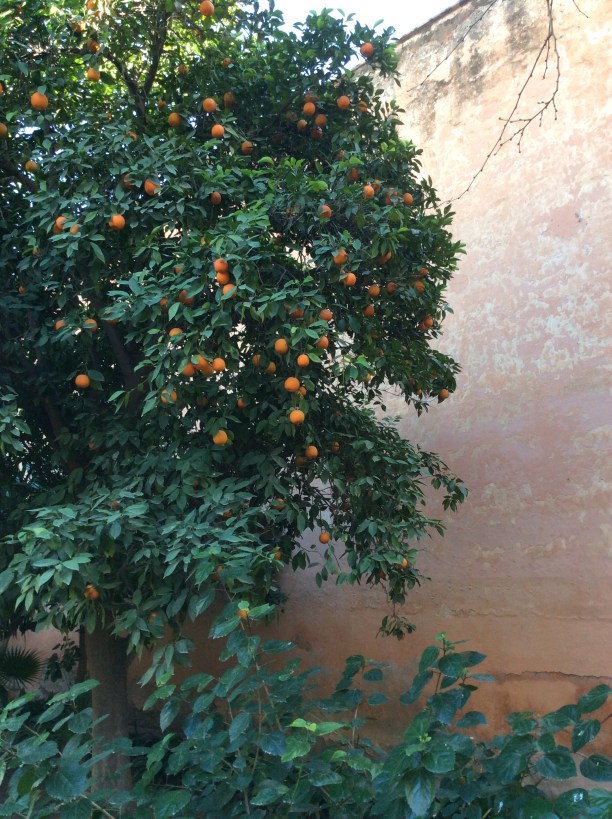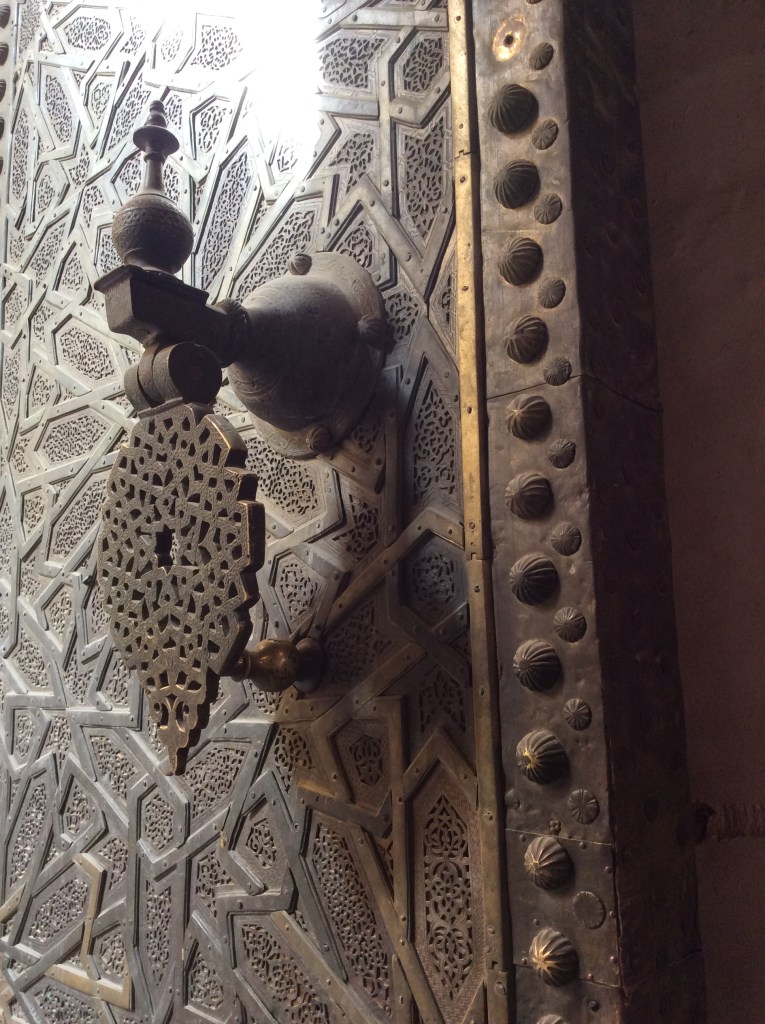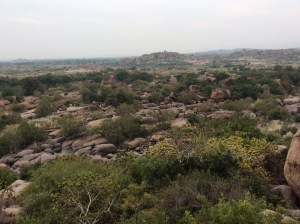
We did not come to remain whole. We came to lose our leaves like the trees, Trees that start again, Drawing up from the great roots.–Robert Bly
A short time ago, I visited the Angel Oak in South Carolina. A live oak tree that shades 17,000 square feet, is 65 feet tall, and has a circumference of 31.5 feet. It received its name from those who owned the property in the 1700s, Martha and Justus Angel and is thought to be the largest tree east of the Mississippi. So many trees were cut down as settlers made their way across what has now become the United States. It’s estimated that less than 10% of the forests remain that once covered North America (see more here.) To stand in the outstretched presence of such an old and enormous tree felt like a blessing. While this aged oak is thought to be 400 years old, the age of the Cypress of Abarqu in Iran is estimated to be between 4,000-5,000 years old, and is thought to be the oldest tree in Asia. Imagining the weather, wars, and other disruptions the cypress has been through in that stretch of time and the many changes the tree endured, it’s astonishing that it survived. Yet there are other ancient trees throughout the world as well. The baobabs in the African continent can live as much as 2,000 years. A Patagonian cypress known as Lañilawal or Alerce Milenario is estimated to have sprouted 5,000 years ago, and the Tjikko spruce in Norway is thought to be an astonishing 9,550 years old.
Reflecting on time and trees, the concept of the family tree comes to mind. While researching for the book I’m currently writing connected to ancestors who lived in Nebraska, Wyoming, Iowa, and South Dakota, I’ve noticed that I don’t have to go more than a few generations back in time and my ancestor’s lives fall into deep shadows of the unknown. I have photos that were given to me of ancestors I don’t know the names of. Because their stories weren’t told, I’m left to imagine them. I’m like the character Pip in the opening lines of Charles Dicken’s Great Expectations, who never saw his father or mother, and conjures up what they are like based on the shape of the letters on their tomb stones. That’s a bleak world to be born into. The writer Barry Lopez states, “Everything is held together with stories. That is all that is holding us together, stories and compassion.” I can’t help but think that part of the collective grief of our era is at least in part that we have lost the stories that connect us to the land and the people we come from and are connected to.

In various parts of the world people set up altars to their ancestors. I recall seeing these in Asia, often containing photos of family members who have passed on. Ancestral altars are a way of remembering how our individual lives are part of a much larger interconnections reaching back in time to places and ways of being and knowing beyond wherever it is one currently situated. Mariella Segarra, in her NPR article, “How to deepen your connection with your ancestors,” describes the altar she has set up in her home. “Altars are for everybody,” she states, and goes on to explain how to create one using objects your ancestors may have carried, used, or that assist you in imagining them—a pen, piece of jewelry, handkerchief, dried leaf or flower, a pebble, or scrap of wallpaper. The point of doing this is to help people recognize we’re woven into a social, historical, environmental fabric and the objects help us remember this. Our lives are not single threads blowing about in the wind. Scientists are discovering the bacteria in our gut can affect our emotional wellbeing, and trauma people experience can be passed on to those around us and possibly to those who come after us as well. How we respond to ourselves, to each other, and the earth we walk on matters. The struggles we may be experiencing are connected to a wider, longer story. We are, so to speak, part of a larger tree. The cambium layer of our present life is connected to branches and deep roots.

Within one’s own town there are many intersecting worlds and histories, so much we don’t know about the stories of the land around us, as well as each other’s stories and the stories of our ancestors. How do we begin to hear the stories of the land we walk on, the stories of ancestors that were never told. George David Haskell spends a great deal of time listening to trees. “To attend to a tree’s song is therefore to touch a stethoscope to the skin of a landscape, hearing what stirs below,” he writes in his article published in the Scientific American article “Ten Ways to Listen to Trees.” Haskell describes listening with one’s hands, feet, as well as nose. “Gusts of wind sonify plant diversity,” Haskell explains. “Oak’s voice is coarse-grained, throaty; maple’s is sandy and light. These differences have their origins in plant evolution and adaption. Drought-resistant oak leaves are thicker, tougher than the water-hungry maple. The different sounds of trees on a dry mountain ridge and in a moist forested hollow speak to the particularities of the ecology of each place.” These are fine distinctions, ones that come with close attention nurtured over time. I can’t help but wonder how I might better understand my own relationship to the world around me if I reached more often to touch the branches and roots of my life, attended more fully to the different textures beyond the boundaries of my current comprehension, listened more carefully inside the silences of history.
We often don’t know the stories of trees and see them as strangers on the street, explains Haskell in an interview with Sam Mowe titled “Listening to Trees.” “It often takes an act of will to learn these stories because, in general, cities present trees as passive, municipal objects that are completely stripped of their stories. We need to swim upstream against that tide to find their stories and, therefore, start to belong to each other.” The article ends by suggesting the following as a way to begin to transcend our emotions’ and minds’ limitations and to grow in awareness of our connection to life’s web:
Pick a tree.
Commit to return to it again and again.
Bring an enthusiastic openness of your senses to the tree.
Don’t think it will lead to enlightenment, insight, or sacrament.
Try and visit the tree in various weather conditions.
Notice how different people interact with the tree.
Notice your own thoughts and experiences.

A similar practice could be followed in connection with ancestors on a family tree. Pick an ancestor. Select an object, photo, or word to represent the ancestor. Make a place for the object, photo, or other chosen reminder and place it in a location where you can greet your ancestor every day. If you want, light a candle or bring an offering. Without any particular expectation, spend a few moments just being present in remembrance of that life. Notice your thoughts and emotions.
Before getting on my bicycle yesterday afternoon, I received a text saying my pregnant niece was going into labor. A new child was about to enter the world. Climate change, combat between Israel and Hamas, missile strikes on Ukraine, ongoing hate crimes, rising inflation—this is the world new children are born into. While these many alarming things are going on, Danielle LaPorte via Mary Standing Otter highlights other aspects of our interbeing that are simultaneously occurring that are sometimes overlooked,
Something is being invented this year that will change how your generation lives, communicates, heals and passes on…
Some civil servant is making sure that you get your mail, and your garbage is picked up, that the trains are running on time, and that you are generally safe.
Someone is dedicating their days to protecting your civil liberties and clean drinking water.
Someone is regaining their sanity.
Someone is coming back from the dead.
Someone is genuinely forgiving the seemingly unforgivable.
Someone is curing the incurable.
For all the heart-breaking realities present in the world, giving birth to a child is an affirmation that despite its many hardships, challenges, and the probability of suffering, life is immensely precious. Around us everywhere we have reminders of the long roots and branches of life that allow us to stand beneath their arms and marvel at the wonder of life.

All of us living now will someday become ancestors. I ask myself, what kind of ancestor do I want to be? What am I doing now to participate in creating the kind of world I will pass on and the stories that will be told? Walking under the ancient limbs of the Angel Oak, leaning into its trunk I sensed the astonishing thing it is to be alive. I hope to pass on that sense of wonder and the knowledge that life is a gift.
As Mary Oliver wrote in her poem, “When Death Comes,”
When it’s over, I want to say: all my life
I was a bride married to amazement.
I was the bridegroom, taking the world into my arms.
When it’s over, I don’t want to wonder
if I have made my life something particular, and real.
I don’t want to find myself sighing and frightened,
or full of argument.
I don’t want to end up simply having visited this world.











































 Though Dalrymple describes the cave where St. John of Damascene wrote these thoughts in The Fount of Knowledge, as “crude and primitive,” he goes on to say that, “Without Damascene’s work, Byzantine ars sacra would never again have been permitted, Greek painters might never have been able to pass on their secrets to Giotto and the Siennese, and the course of the Renaissance, if it had happened at all, would have been very different.” I’m very grateful for Damascene’s words and thoughts regarding art. Without them, we’d likely be deprived of much beauty, and the spirit that speaks through that beauty.
Though Dalrymple describes the cave where St. John of Damascene wrote these thoughts in The Fount of Knowledge, as “crude and primitive,” he goes on to say that, “Without Damascene’s work, Byzantine ars sacra would never again have been permitted, Greek painters might never have been able to pass on their secrets to Giotto and the Siennese, and the course of the Renaissance, if it had happened at all, would have been very different.” I’m very grateful for Damascene’s words and thoughts regarding art. Without them, we’d likely be deprived of much beauty, and the spirit that speaks through that beauty.




































